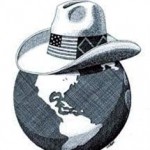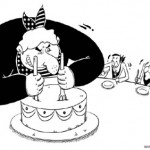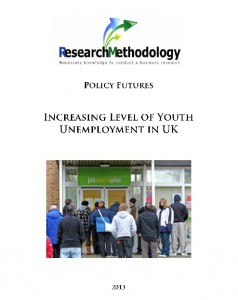Politics

Initially introduced by Ogranski in 1968, and further developed by Ogranski and Kugler (1980), the framework of Ogranski and Kugler’s Power Transition is based on the assumption that international order is hierarchically structured. According to this framework there are countries that are satisfied with their position in a hierarchical structure of the world order, at the same time when certain countries are not satisfied. Accordingly, Ogranski and Kugler’s Power Transition theory states that counties that are not satisfied with their positions in hierarchical structure of international order may develop hegemonic ambitions and initiate international conflicts. Moreover, Ogranski and Kugler (1980) divide the process power transition into the following three stages: The stage of potential power. This stage is associated with gaining access to reserves and competitive advantages, and increase in the level of their utilisation to fuel economic growth in the country. Nowadays, countries such as Indinesia and Singapore can be specified to be in the stage of potential power. The transitional stage is marked with the utilisation of newly gained sources of competitive advantage in an active and extensive manner to become a hegemonic state. China and India can be specified to be on transitional stage to hegemony. Power maturity is the stage where hegemonic decline is highly probable due to a range of reasons that primarily relate to the loss of competitive advantage in the global marketplace. The USA and the UK can be mentioned to illustrate the instances of power maturity.
By John Dudovskiy
Category: Politics

The theory of hegemonic stability relies on multiple perspectives such as liberal, historical and structural (Sobel, 2012). According to hegemonic theory high level of openness and stability of international system can be maintained when there is a single hegemonic country that meets the following requirements: a) Hegemonic country must possess sufficient amount of resources in order to allow the country to engage in leadership; b) Hegemonic country must be enthusiastic in terms of pursuing policies that pursuing policies needed to create and maintain free economy. Hegemonic models are divided into three different categories by Joseph (2013) in the following manner: Benevolent hegemon. For this type of hegemon common interests prevail over self-interest of a hegemonic state. Moreover, benevolent hegemonic model is closely associated with absolute advantages of countries. According to Joseph (2013) individuals who believe in liberal values consider hegemon to be benevolent in most cases Mixed motives and strategies hegemon. Involving both, absolute and relative advantages, mixed hegemon pursues common and personal benefits in a simultaneous manner. Joseph (2013) specifies mixed hegemon as the most common model of hegemonic states. Exploitative hegemon is perceived to be based purely on self-interest of hegemonic states and may involve the use of coercion to enforce compliance with the wills of hegemonic states. There is a consensus amongst authors about highly negative effects of the model of exploitative hegemon to other countries. References Joseph, J. (2013) Hegemony: A Realist Analysis, Routledge Sobel, A.C. (2012) Birth of Hegemony: Crisis, Financial Revolution, and Emerging Global Networks, University of Chicago Press
By John Dudovskiy
Category: Politics

Literature review has found a debate about the impacts of hegemony to an open economic system. On one hand, authors such as Catley and Mosler (2007), Russett (2011) and Baker (2011) confirm positive role of hegemonic states in achieving macroeconomic stability in global scale. The main justifications behind this stance relate to hegemon serving as role model for other states and playing an instrumental role in creation and facilitation of monetary and trade regimes. Supporters of this viewpoint offer various examples to justify their view. Specifically, these examples include positive implications of the British hegemony in the 19th century to trade liberalisation, and reductions on the level of free trade in the global scale after the decline in British hegemony 1875 onwards (Catley and Mosler, 2007). Moreover, Russett (2011) argues that absence of hegemonic state within the period between the two World Wars has resulted in intensification of economic protectionism in many countries, and the situation has escalated to give rise to the emergence of the Great Depression. Russett (2011) further argues that macroeconomic stability has been achieved in many countries only after the emergence of the US as a powerful hegemon upon the completion of the World War II. According to this approach, the role of hegemonic states in global macroeconomics can be represented through the following points (Baker, 2011). a) Maintaining stabilised macroeconomic situation; b) Enforcement of free economy rules though the use of influence; c) Encouraging other counties to eliminate barriers to international trade; d) Contributing to the growth of national economies of other countries through imports On the other hand, sceptical approach towards the benefits of hegemonic states to macroeconomic stability and international trade has been expressed by Schake (2009) and Nye (2011). According to this group of authors bargaining and cooperation between countries is more…
By John Dudovskiy
Category: Literature Review

In simple terms hegemony can be defined as “the predominant influence, as of a state, region, or group, over another or others” (The Free Dictionary, 2014, online). Alternatively, hegemony can be defined as “the leadership by a single stronger partner of other less strong, but still autonomous partners, undertaken for the mutual benefit of all parties concerned” (Warner, 2006, p.3). Catley and Mosler (2007) specify power to play a significant role in terms of distinguishing between the notions of hegemony and colony. Specifically, according to Catley and Mosler (2007), the while the term of colony relates to direct use of power, hegemony is associated with indirect use of power. It can be further elaborated that direct power relates to intimidation in physical and psychological levels, whereas indirect power is exercised through legislature and tends to be latent (Schake, 2009). In its basic form Warner (2006) considers hegemony as a struggle for authority and closely associates hegemony with power. Moreover, the role of power in hegemony has been stressed by Schake (2009), Nye (2011) and Zhang (2012). Basically, authors refer to positive correlation between power of a country and the level of its hegemony. Nye (2011) introduces the idea of smart power and defines it as “the combination of the hard power of coercion and payment with the soft power of persuasion and attraction” (Nye, 2011, p.xiii). Schake (2009) stresses the importance of context of any particular situation when analysing the extent and use of power, and convincingly argues that analyses for the use of power should not be conducted without taking into account unique aspects of any given situation. The name of Antonio Gramsci has featured in every source of secondary data analysed during the literature review that addresses the topic of hegemony in an adequate levels of depth. Gramsci…
By John Dudovskiy
Category: Politics

Main forms of intellectual property protection available to companies include patents, trademarks, design copyright and trade secrets and important aspects of using these intellectual property protection techniques are discussed further below: Patenting is one of the most popular forms of intellectual property protection. Types of intellectual properties to be protected by patents relate to methods and processes that facilitate working of things (Davies and Cheng, 2011). Patents can be divided into two categories: utility patents and design patents and patents have been initially developed in order to assist inventors to recoup research and development expenses before competitors with the same products enter the market. Patent litigation issues are commonplace between multinational companies in general, and businesses in computing, consumer electronics and software industries in particular. For example, during the year of 2012 alone HTC, Taiwan-based global smartphone designer and manufacturer have been involved in ten patent litigation lawsuits (Annual Report, 2012). The importance of protection of intellectual property is duly understood by many multinational companies. For example, Pepsico publicly announces that “we protect our intellectual property rights globally through a combination of trademark, copyright, patent and trade secret laws, third-party assignment and non-disclosure agreements” (Annual Report, 2012, p.47). Moreover, one of the most recent cases of patent infringement lawsuit involve long-standing dispute between two global computer and consumer electronics manufacturing companies – Apple and Samsung. The dispute relates to Samsung’s use of technology that has been previously used by Apple for its IPhone and IPad products and patented. According to the verdict issued by a US Federal jury, Samsung Electronics has been ordered to pay Apple USD 290 million compensation (Martin, 2013). Implications of this particular lawsuit are significant at the global scale, because it illustrates severe negative financial and brand image damage implications of patent violation practices. Trademarks represent…

Iran was the first state in the Persian Gulf to find oil in 1908, and since 1920s petroleum has served as the main industry in Iran. There is a general consensus in the literature that the overthrow of the Shah of Iran and the revolution in Iran in 1977 came as a great surprise to many individual and organisational observers. This revolution has been political, as well as, cultural. Increasing levels of rentierism in Iran under the rule of Shah, at the same time when neglecting the needs and concerns of ordinary people can be specified as one of the major factors contributing to the emergence of revolution. Specifically, it has been noted that “after the mid-1960s, this state did not need to wrest taxes from its own people, and the economic basis of its revenues was an industry oriented primarily to exports, and employing only a tiny percentage of the domestic labour force” (Skocpol, 1994, p.244). However, it can be argued that the level of rentierism in Iran has changed only a little after the revolution due to a range of reasons such as high levels of corruption, leadership incompetence, and lack of motivation from the government leadership. Moreover, Gordon et al. (2008) assess the average degree of rentierism in Iran for the period between 1972 and 1999 to be 55 per cent. According to Gordon et al. (2008) rentierism has been causing deep economic structural weaknesses in Iran and this along with political uncertainty and environmental vulnerabilities represent complex challenges for Iran in short-term and long-term perspectives. Negative implications of rentierism are also noted by Duero (2009), who links rentierism in Iran to the issues of unemployment and underemployment, demographic problems and the issues associated with patterns of energy production and consumption. It has been assessed that government’s…

This report represents a brief assessment of various aspects of primary education in the UK as an important merit good. The report starts with assessing the role of the UK government in providing primary education and this is followed by analysis of possibilities for private sector to provide primary education. Moreover, the report includes discussions of positive externalities of primary education and assesses the possibilities of market failure if the provision of primary education was left to provide to free market. Socially desirable merit goods are “goods that society deems so valuable that everyone should have them” (Frischmann, 2012, p.45). There are two basic characteristics of merit goods: the value of the good is not usually fully appreciated at the time of consumption, and consumption of merit goods has positive effects to other individuals (Economics Online, 2013). 1. Introduction 3 2. The Role of Government in Providing Primary Education 3 3. Private Sector as Provider of Primary Education 4 4. Positive Externalities of Primary Education 5 5. Provision of Primary Education by free Market and Possibility of Market Failure 7 6. Conclusions and Recommendations 9 References 10 How do I receive the report? Once payment is made you will receive a link to you e-mail you have registered with on Pay Pal or the e-email you have entered when specifying bank details to download the report. The report is downloaded in PDF format. The link will stay active for 7 days. How can I use the report to complete my academic assignment/research? Reports and essays offered by research-methodology.net are professionally written samples in their respective areas. Reports and essays are intended to be used as guides and sources of secondary data for reference purposes. I did not receive the link/I can not download the report? If you have any difficulties…

This paper represents a case study report devoted on the issue of increasing levels of youth unemployment in the UK. The report starts with a brief description of relevant existing key policies. This is followed by the identification of gaps on youth unemployment that need to be addressed. The report also contains discussions about relevant policy goals and the extent of their alignment with government preferences. Moreover, relevant policy options analyses are included in this report with detailed explanations of two the most suitable and appropriate policy options taking into account present economic and political circumstances in the UK. The report is concluded by making recommendations regarding the implementation of a specific policy option with detailed explanations provided. Youth unemployment is proving to be a serious challenge in the UK with highly negative short-term and long-term economic and social implications. Specifically, nearly 1.5 million, or more than 20 per cent of young people in the UK are found to be not engaged in education, employment or training (ACEVO, 2012). Moreover, according to estimations, the net present value cost of youth unemployment for the next ten years is going to amount to £28 billion (ACEVO, 2012). A wide range of negative implications of youth unemployment include negative impact on national economy for short-term and long-term perspectives, negative impact on future earning potentials of youth involved, detrimental impacts on mental and individual health of young individuals involved (Gregg et al., 2011), and increase in the level of anti-social behaviour within the society (Howell, 2005). The major reasons for increasing levels of youth unemployment in the UK have been specified as the recent global economic and financial crisis, failure in the UK immigration policies (Sunley et al., 2011), and systematic employment policy failures (Furlong, 2012). 1. Introduction: Nature of the Problem 1 2.…

Multiple Stream Model developed by Kingdon (1984), on the basis of refining garbage can framework, represents an alternative approach to policy process and perceives it in terms of three different streams: a problem stream, policy stream to address the problem, and the political stream. According to this theoretical framework “the streams are usually independent, but windows of opportunity sometime open that allow for the streams to interact” (Crank, 2003, p.35). First, the problem stream relates to the source of the issue that necessitates introduction of a policy. As it has been partially discussed above, the problem stream for Tesco packaging policy is directly related to increasing status of sustainability issues in media, and consequently consumers in UK and elsewhere becoming more sensitive towards the issues related to sustainable development. Second, the policy stream involves evaluations and analysis of a wide range of policy ideas and proposals directed to the solution of the problem. In Tesco, the policy to be adopted as a response to the problem needed to balance the profitability of business operations with the creation of ‘green’ image fir the brand. In other words, Tesco strategic level management faced with the task of positioning the company as a ‘green’ in a cost effective manner. Third, the political stream includes various elements such as relevant government legislation, the influence of various non-government organisations and pressure groups and others. It is important to mention that while UK government encourages multinational business such as Tesco to behave in a socially responsible manner, there is a lack of legislation that specifies the extent of ‘greenness’ businesses need to adhere to (Horrigan, 2010). Therefore, Tesco possesses a great level of freedom in terms of government legislation when formulating its packaging policy. However, there are additional elements of political stream such as non-government organisations…

One of the popular definitions of policy reads as “a statement by government – at whatever level – of what it intends to do about a public problem” (Birkland, 2010, p.9). Accordingly, the issues of policy process are mainly discussed in the literature in relation to government policies. Tesco packaging policy is based on the following five key principles: being fit for purpose, using the lightest materials in terms of weight, using materials from the most sustainable sources, maximising the opportunities for recycling and recovery, and designed in a way that the lowest carbon impact can be achieved (Waste and packaging, 2012, online). According to Peters (2009) the Stages Model of Policy Process consists of the following stages: issue emergence, agenda setting, alternative selection, enactment, implementation and evaluation. All of these stages can be analysed in an individual manner in relation to the packaging policy of Tesco. Issue emergence of the policy process is an initial stage when specific problems are identified that need to be dealt with. Issues that require the introduction of relevant policies may arise fuelled by a wide range of reasons such as disasters, or any other dramatic changes. In terms of Tesco packaging policy this stage corresponds with increasing role of corporate social responsibility (CSR) aspect of the business in general, and the level of ‘greennes’ in particular. In other words, defined as responsibilities of business towards society apart from profit maximisation (Blowfield and Murray, 2008), CSR has emerged as a crucial aspect of the business to be dealt with by Tesco. The agenda setting stage of policy process corresponds with the issue growing to an extent that it requires immediate and due attention. It has been stated that “agenda setting occurs when the key players focus on an issue problem, which can be…
January 2, 2013
By John Dudovskiy
Category: Corporate Social Responsibility
Tags: Ethics, Retail, Sustainability
